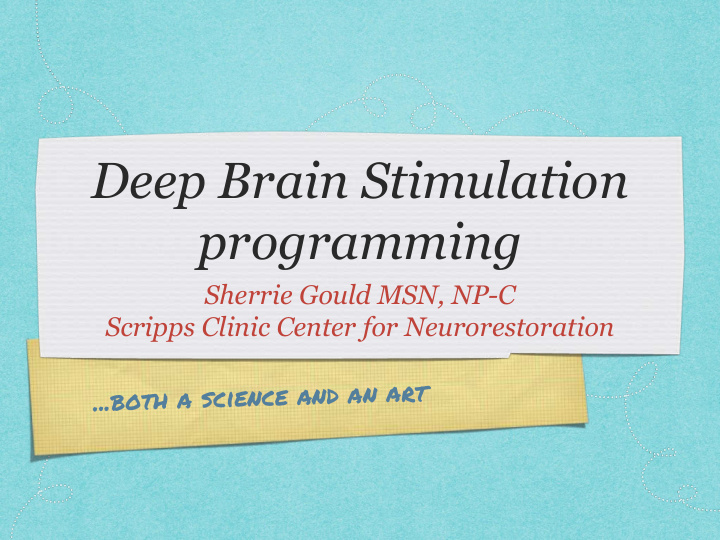



Deep Brain Stimulation programming Sherrie Gould MSN, NP-C Scripps Clinic Center for Neurorestoration r t a n a n d a c e e n c i s a t h o . . b .
Initial Programming • Postpone programming until micro-lesion effect subsides, about 3-4 weeks following surgery • (although early programming can be performed) • Schedule patient for morning visit if possible, with medications withheld overnight • Helpful tip: Have them bring their morning dose of medications
Clinician and patient controls
Activa SC/PC/RC Patient Programmer
Efficient Programming: Initial Programming Visit 1. Explain to the patient that programming is interactive process 2. Ask if was a lesion effect? Verify device function (impedence) 3. Monopolar review 4. Set initial parameters
So What is Involved in Programming DBS?? • 1) Test all 4 electrodes on either side of brain-which brings best result with no side effect? • 2) Set pulse width (depending on tremor, dystonia • 3) Set frequency (depending on tremor, gait) • 4) Set amplitude
DBS Lead Electrode Selection 0 1 2 3 Lead Electrodes off (+) positive 3 3 off off 2 2 off (+) 1 1 (-) (-) 0 0 off off Unipolar Bipolar
Interesting features of Activa SC/PC/RC • Groups • Interleaving • Increased patient autonomy • Fine pulse width adjustments • Patient usage trends • In the appropriate patient, this proves to be invaluable when it comes to follow up visits
Follow-up Programming Visits • Review interim changes: symptom response, medication changes, adverse effects • The goal is to slowly lower meds • as the stimulation increases • Review results of monopolar review for insight, patient likes • and dislikes • Formulate and implement management plan – Adjust stimulation, adjust medication, make no adjustments * Humanitarian Device: The effectiveness of this device for the treatment of dystonia has not been demonstrated.
Thank you for your time and attention
Recommend
More recommend